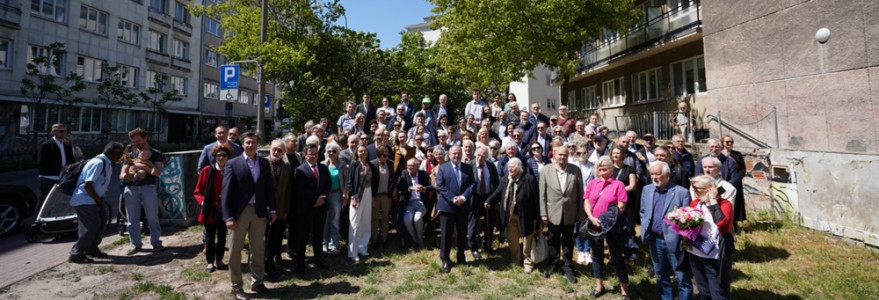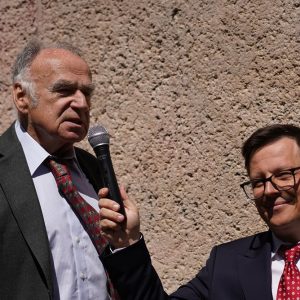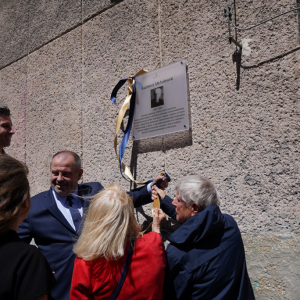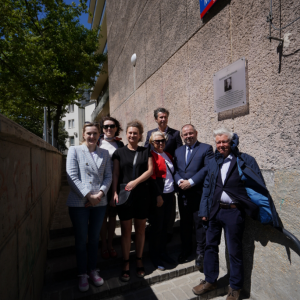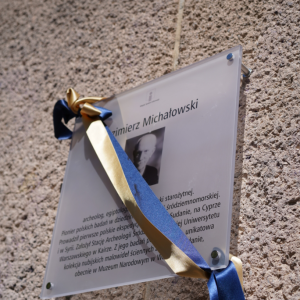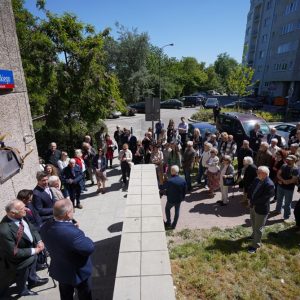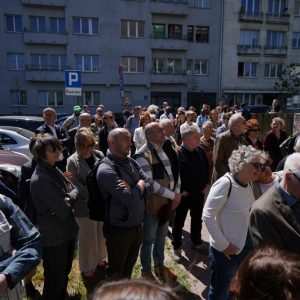On 17th May, a ceremony was held to unveil a plaque in the pedestrian passage named after Prof. Kazimierz Michałowski – a renowned archaeologist and historian of ancient art from the University of Warsaw, the doyen of Polish Mediterranean archaeology.
The Warsaw City Council passed a resolution to name a pedestrian passage in Śródmieście Północne, near the University of Warsaw, after Kazimierz Michałowski. The occasion was marked by a ceremony attended by the University authorities, the pupils and family of Prof. Michałowski.
The Kazimierz Michałowski Passage in Warsaw’s Śródmieście district is located in the area which is associated with Prof. Michałowski. The passage is situated near the University of Warsaw, adjacent to the Polish Academy of Sciences and right next to the so-called Professor’s tenement house in Sewerynów Street, where Prof. Michałowski lived.
“Prof. Michałowski had in him what the University of Warsaw is most proud of. He had a passion for research and was consistent in pursuing it and, most importantly, he loved and supported his students. He raised a multitude of excellent archaeologists,” Prof. Alojzy Z. Nowak, the Rector of the University of Warsaw, said.
“Forty-three years after Prof. Michałowski’s death, we finally have a street named after him in Warsaw. Today he is at home again,” Prof. Karol Myśliwiec, the student of Prof. Michałowski, said.
The ceremony of unveiling the commemorative plaque in the Kazimierz Michałowski Passage was attended by representatives of the UW’s Polish Centre for Mediterranean Archaeology, including its director Prof. Artur Obłuski, scientists, members of the UW community and Warsaw residents.
Prof. Kazimierz Michałowski (1901–1981) was an eminent archaeologist, Egyptologist and historian of ancient art. He pioneered Polish research in the field of Mediterranean archaeology. He led the first Polish expeditions in Egypt, Sudan, Cyprus and Syria. He established the Polish Centre of Mediterranean Archaeology University of Warsaw in Cairo. His research resulted in obtaining, for example, a unique collection of Nubian wall paintings from Faras in Sudan, now in the National Museum in Warsaw.



